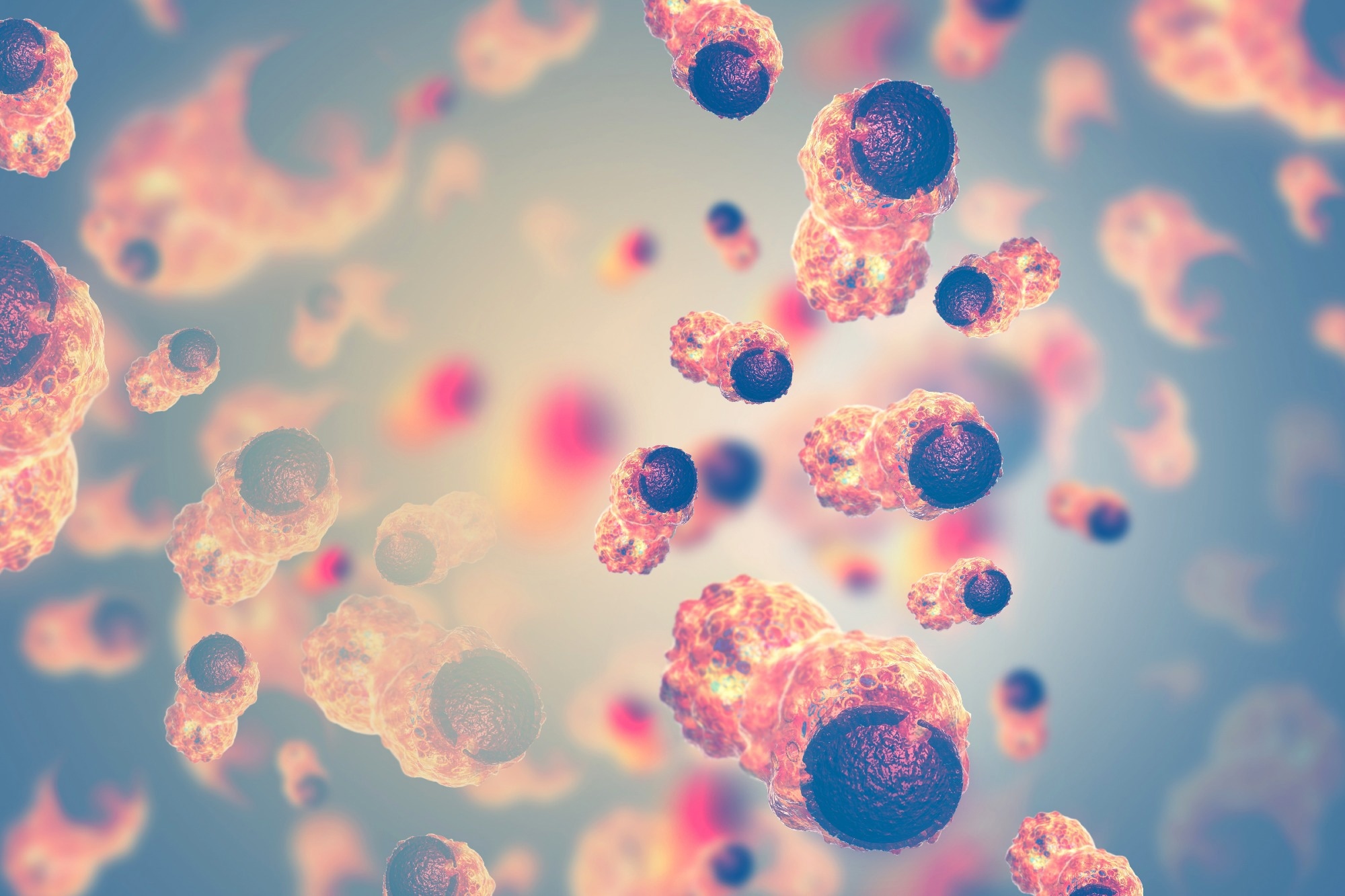Microniches of intratumoral microbiota impact spatial and cellular heterogeneity in cancer - News-Medical.Net
In a recent article published in Nature, researchers mapped spatial, cellular, and molecular interactions of host and tumor-associated bacteria within the tumor microenvironment (TME). They used in situ spatial-profiling technologies and single-cell ribonucleic acid sequencing (scRNA-seq), focusing on gastrointestinal cancers, in particular, oral squamous cell carcinoma (OSCC) and colorectal cancer (CRC).

Background
In vitro and preclinical studies using animal models have presented molecular evidence of the role of tumor-associated bacteria in at least 33 major cancer types and metastasis. Imaging data has shown the co-localization of bacterial markers with epithelial and immune cell targets, suggesting that the intratumoral microbiota could be intracellular.
Additionally, intratumoral host–microbiota have a role to play in immunosurveillance and chemoresistance. However, studies have not uncovered the identity of these tumor cell-associated organisms within the TME and the host cell types with which they interact in patient tumors. In addition, whether their spatial distribution and interactions with the host affect diverse functional capabilities within the TME.
About the study
In the present study, researchers first assessed the composition of the intratumoral microbiota at the phylum and genus levels. Next, they visually confirmed the heterogeneous spatial distribution of the identified bacterial communities, including Fusobacterium nucleatum. To this end, they performed 16S ribosomal RNA gene sequencing on 44 tissue pieces from the tumors of 11 patients with CRC. In addition, they targeted RNAscope–fluorescence in situ hybridization (RNAscope-FISH) imaging of densely populated compartments of bacterial cell biomass and bacteria-negative areas within the same tumor specimen. Further, they quantified the tissue transcriptional load of specific organisms using the unique molecular identifiers (UMI) metric.
Further, the researchers quantified the expression profile of 77 proteins associated with anti-tumor immunity and cancer progression using a digital spatial profiling (DSP) platform. Next, they developed the INVADEseq method to investigate bacterial–host cell-to-cell interaction within the TME and the effect on host cell transcriptomics. This method allowed the generation of complementary DNA (cDNA) libraries with bacterial transcripts from the bacteria-associated human cells. In other words, it helped the researchers map bacterial reads to single human cells.
A reductionist in vitro co-culture approach allowed the researchers to evaluate the direct interactions of a dominant member of the intratumoral microbiota with immune or epithelial cancer cells. They co-cultured CRC epithelial spheroids with an F. nucleatum CRC isolate, followed by embedding in collagen matrices that contained neutrophils distributed uniformly throughout the gel. Next, they used live-cell confocal microscopy to visualize, track, and compare the embedded neutrophils inside F. nucleatum-infected spheroids with uninfected spheroids.
Study findings
RNAscope-FISH identified bacterial transcripts in 46% and 28% of the capture spots within CRC and OSCC tumors, respectively. Bacterial genera identified per capture spot ranged from one to 42 and one to 31, with a median of eight and two in the OSCC and CRC tumors, respectively. In the OSCC tumor, the UMI metric identified Parvimonas, Peptoniphilus, and Fusobacterium as the most dominant bacterial genera. Conversely, the dominant genera in the CRC specimen were Fusobacterium and Bacteroides. Intriguingly, the latter had an order of magnitude more reads and UMIs compared to the OSCC specimen. Co-localization of communities of isolated genera and several different genera within capture spots highlighted the complexity of intratumoral microbiota interactions across these two cancers.
Bacteria-positive tissues in tumors showed marked increases in CD11b+ and CD66b+ myeloid cells but lower densities of CD4+ and CD8+ T cells. The case with adjacent bacteria-negative regions was different; this indicated that the tumor-associated microbiota had a highly localized effect. Perhaps invasive bacteria recruited myeloid cells to induce an inflammatory response through Janus kinase (JAK)–signal transducer and activator of transcription (STAT) signaling. It promoted T cell exclusion and tumor growth by secreting specific interleukins and chemokines into the surrounding environment. Notably, intracellular bacteria generated gene signatures consistent with cancer-induced cell invasion, metastasis, DNA damage repair, and cell dormancy by activating transcriptional factors from the Jun and Fos families.
Mapping bacterial reads from INVADEseq analysis to annotated single cells showed that Fusobacterium and Treponema were predominantly associated with the epithelial and monocyte-derived macrophage (cell clusters) in these patient tumors, with a total bacterial infection rate of 25% and 52%, respectively.
Gene set enrichment analysis (GSEA) confirmed that the cells within the bacteria-dominant 'epithelial cell cluster 3' were cancer cells, with upregulation of signaling pathways involved in cancer progression (e.g., epithelial-mesenchymal transition or EMT pathway). The recruitment and retention of neutrophils to the cancer cell spheroids infected with F. nucleatum indicated that the intratumoral microbiota had an active role in the enrichment of neutrophils within bacteria-colonized microniches of patient tumors.
The CRC epithelial cells infected with F. nucleatum detached from the spheroid mass and migrated into the surrounding collagen gel as single epithelial cells. On the contrary, uninfected cancer epithelial cells spread through the gel as a spheroid mass at an average expansion rate of 1.34 × 105 µm3 h−1. Invasive bacteria promoted the invasion of cancer cells but also changed the motility patterns of infected cancer cells thereby promoting cell heterogeneity at a functional level.
Conclusions
The study revealed that the distribution of intratumoral microbiota was heterogeneous across human tumors. Despite its heterogeneity, the distribution of the microbiota within a tumor was not random but highly organized, and microniches with immune and epithelial cell functions actively stimulated cancers. Overall, it altered the biology of distinct cellular compartments, affecting anti-tumor immunity and the migration of cancer epithelial cells. According to the authors, the intratumoral microbiota in 33 major cancer types discovered so far could be analyzed using the same tools and technologies.
Comments
Post a Comment